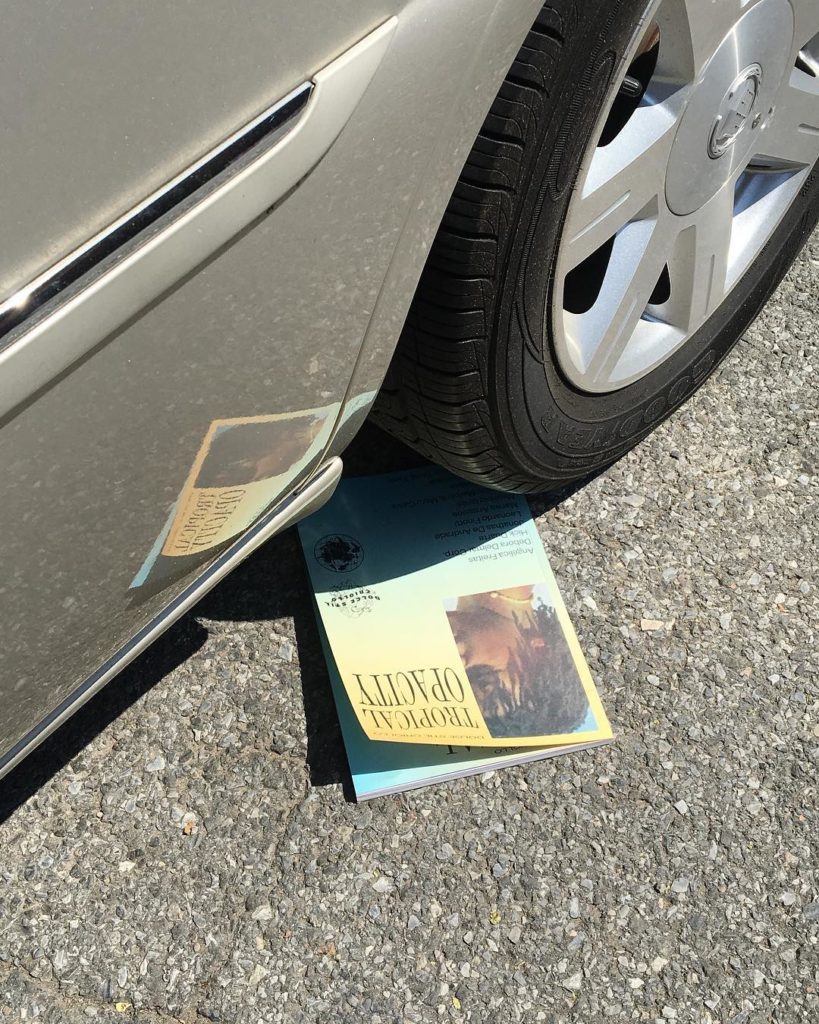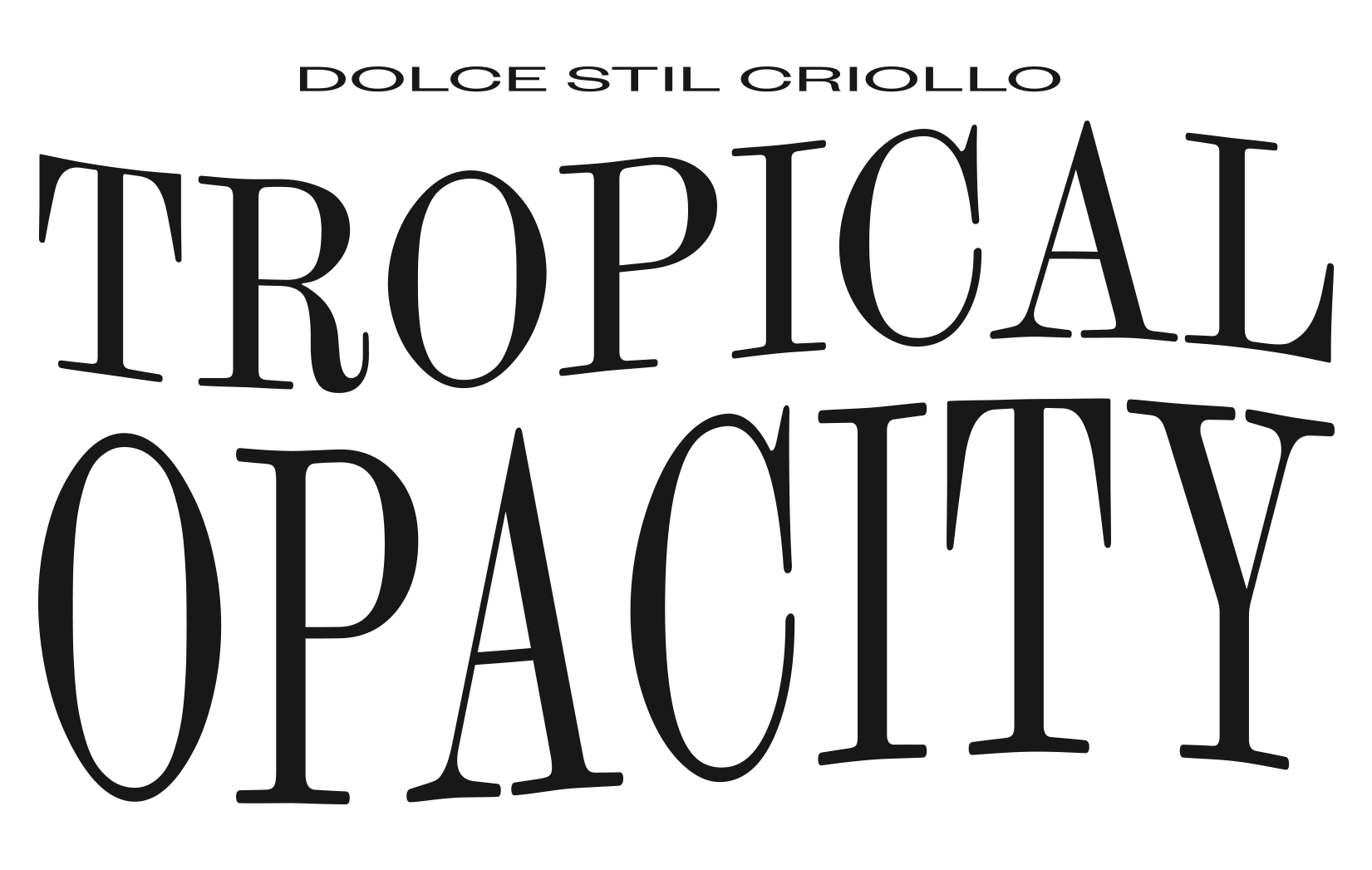

Dolce Still Criollo is a neologism that invokes its own complexity. The publication derives from Dante’s inferno in order to establish itself in the Americas, where it serves as a platform for topical works investigating Latin America’s cultural-political sphere. Both its editorial line and experimental design seek to create a multilingual readership capable of reading across social registers.
Dolce Stil Criollo’s first issue explored the concept of “islands” as a dematerialized, intermediary space of possibility and border. The second issue, Beauty is Our Spiritual Guernica, proposed an aesthetics based on embodied vernaculars of signage and play and was published in partnership with Meli-Melo Press of Brazil. Both issues were printed using Risograph duplicators and were sold in art book fairs in Latin America, United States and Europe.
Dolce Stil Criollo’s third issue explores how “tropical opacity” is a political mode of being that acknowledges the constructed nature of the tropical as nothing more than a pedagogical opportunity for its own re-imagining. The works within this issue respond to cultural factors from a globalized era in which knowledge and subjectivity are colonially determined, geo-politically situated, and economically conditioned..
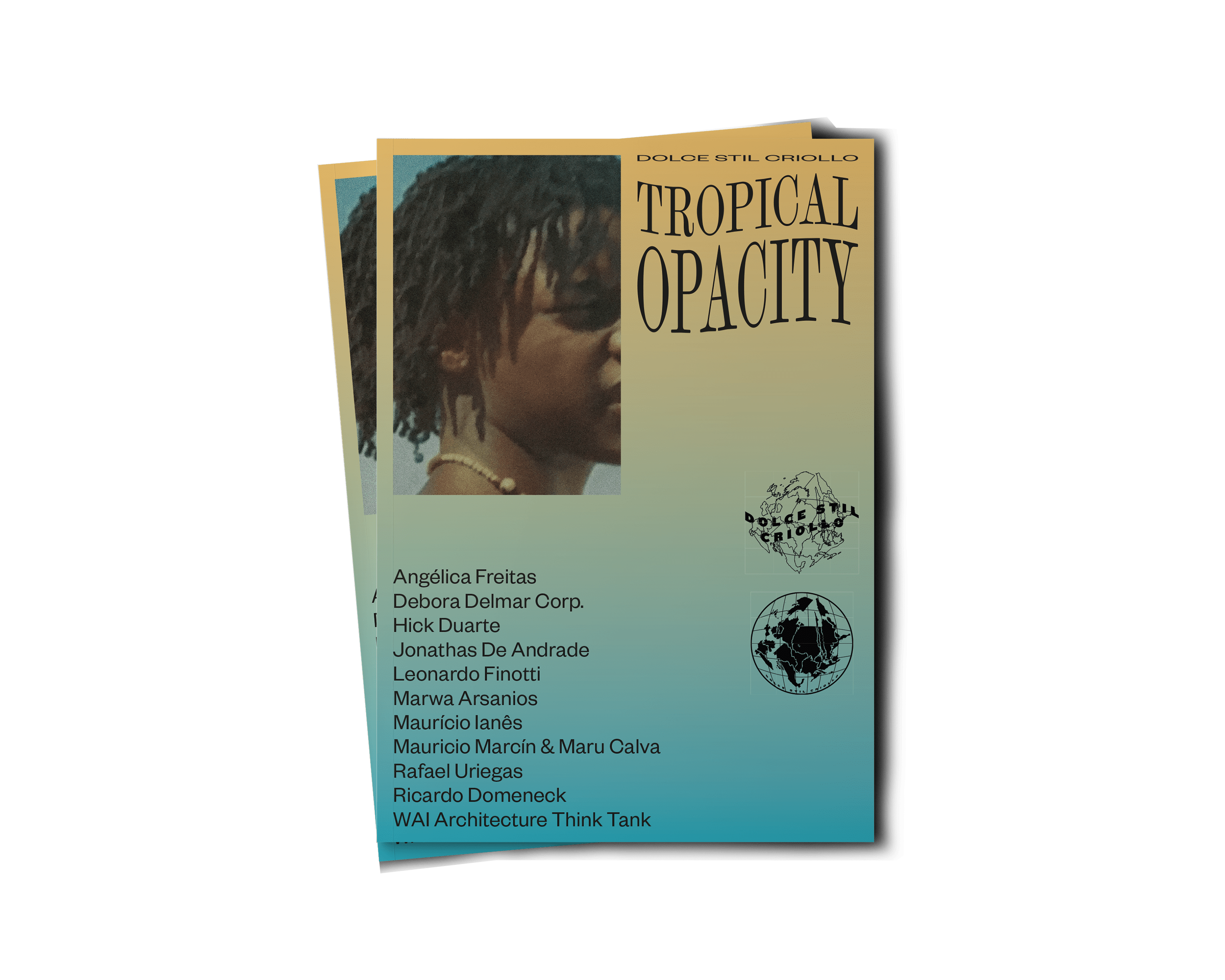


The issue features a collaborative translation of Édouard Glissant’s essay “For Opacity” produced by over 90 Latin American writers, where each of them was in charge of translating one sentence from the essay. The collective translation works as a conductor of the publication and is followed by works by the following artists:



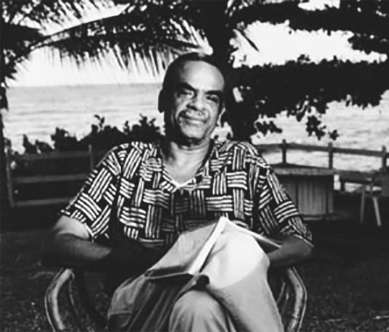
“Por la opacidad” is a collective response to Édouard Glissant’s essay “Pour l’opacité” by 97 writers and artists from Latin America. The project asked each collaborator to translate a single sentence from “Pour l’opacité” by locating a coordinating passage from his or her own writings. According to Glissant, opacity is a theory of difference that evades the reductive necessity of transparency. The project follows Glissant’s line of reasoning by evading translation’s need for semantic fidelity. Rather, “Por la opacidad” translates the various relations among its collaborators who have used Glissant as a point of departure.
A video was also created to coincide with the Brazilian launch of Dolce Stil Criollo 3 on September 29th, 2017 at Galeria Vermelho in São Paulo, Brazil. The video contains footage from Brazil’s urban areas as well as its countryside. The video’s ethnographic lens presents an opaque take on when, where, and how the borders of the tropical are demarcated.
directed by
Gabriel Finotti
edited by
Gabriel Finotti
Ganso
text by
Édourad Glissant
reading by
Christopher Rey Pérez
Xel-Ha López
music by
Cavalo Serpente
(Bruno Gold & Mariano Sarine)
shot by
Clayton Lopes
Fernando Alves
Gabriel Finotti
Ganso
produced by
Sometimes Always
+++
collective translation by
Christopher Rey Pérez*
(Ramala, Palestina)
Sofía Ferrari
(Mar de Plata, Argentina)
Diego Gerard
(Ciudad de México, México)
Raquel Albarrán
(Carolina, Puerto Rico)
Berta García Faet
(Valencia, España)
Diego Espíritu
(Ciudad de México, México)
Nadia Ledesma
(San Antonio, Estados Unidos de América)
José Gorostiza
(Villahermosa, México)
Óscar David López*
(Monterrey, México)
Jorge Alejandro Vargas Prado*
(Cusco, Perú)
Yolanda Segura
(Querétero, México)
Víktor Gómez Ferrer
(Valencia, España)
Gaby Cepeda
(Ciudad de México, México)
María Cecilia Perna
(Buenos Aires, Argentina)
Guillermina Etkin
(Buenos Aires, Argentina)
Miguel Fernández de Castro
(Hermosillo, México)
Lazaro Tello Pedró
(Ciudad de México, México)
Dennise Abush
(Ciudad de México, México)
“Gonzalo Higuaín”
(Un pueblo chico)
Ana Carolina Zegarra Paredes
(Arequipa, Perú)
Freddy Ñañez
(Caracas, Venezuela)
Rosario Loperena
(Ciudad de México, México)
Cecilia Lopez*
(Brooklyn, Estados Unidos de América)
Mayra Silva
(Monterrey, México)
Tomás Fadel
(Buenos Aires, Argentina)
Aníbal Quijano
(Yungay, Perú)
Lara Josefina Falconi
(Mar de Plata, Argentina)
Mara Pastor
(Ponce, Puerto Rico)
Andrés Paniagua
(Ciudad de México, México)
Tim MacGabhann
(Ciudad de México, México)
Horacio Warpola
(Querétaro, México)
Nadia Sol Caramella
(Buenos Aires, Argentina)
Natalia Figueroa
(La Sirena, Chile)
Lucía T. Courtoisie
(El Abra, Uruguay)
Alejandra Machuca Gutiérrez
(Piura, Perú)
Txema Novelo
(Ciudad de México, México)
Leo Marz
(Monterrey, México)
Sofia Gallisá
(San Juan, Puerto Rico)
María Silva
(Buenos Aires, Argentina)
Ana Hidalgo
(Granada, España)
Oswald de Andrade
(São Paulo, Brasil)
Rodrigo Arreyes
(Buenos Aires, Argentina)
Ricardo Suasnavar
(Ciudad de México, México)
Irizelma Robles
(Dorado, Puerto Rico)
Nérvinson Machado
(Monterrey, México)
Aldo Giacometti
(Buenos Aires, Argentina)
Inti García Santamaría
(Ciudad de México, México)
Jael Orea
(Ciudad de México, México)
Mariano Dorr
(Buenos Aires, Argentina)
Andrés Díaz
(Buenos Aires, Argentina)
Eder Castillo
(Tlalnepantla, México)
Sara López
(Monterrey, México)
Juan Vesania
(Ciudad de México, México)
Kevin Castro
(Lima, Perú)
Sebastián Guitar
(Buenos Aires, Argentina)
Nibia Pastrana
(San Juan, Puerto Rico)
Blanca Sotos
(Ciudad de México, México)
Íñigo Malvido
(Ciudad de México, México)
Luis Eduardo García
(Guadalajara, México)
Carlos Iván Hernández
(Ciudad de México, México)
Paula Brecciaroli
(Buenos Aires, Argentina)
Maru Delgado
(Arica, Chile)
Jairo Rojas Rojas
(Montevideo, Uruguay)
Hugo Roca Joglar
(Ciudad de México, México)
Melanie Perez
(Santurce, Puerto Rico)
Olga Pavesa
(Ciudad de México, México)
Samanta Quevedo
(Buenos Aires, Argentina)
Jorge Luís Borges
(Buenos Aires, Argentina)
Milton Läufer
(Brooklyn, Estados Unidos de América)
Copito
(Gatos Güeros, México)
Valeria Román Marroquín
(Lima, Perú)
J. Estiven Medina Ortiz
(Apurímac, Perú)
Bruno Darío
(Ciudad de México, México)
Sor Juana Inés de La Cruz
(Ciudad de México, México)
Cindy Jimenez
(Bayamón, Puerto Rico)
Sebastían Realini*
(Buenos Aires, Argentina)
Néstor Quiñones
(Ciudad de México, México)
Anónimo
Robert Baca
(París, Francia)
Joseph Reiter*
(Ciudad de México, México)
Jorge Posada
(Ciudad de México, México)
José Juan Tablada
(Ciudad de México, México)
Nicole Cecilia Delgado*
(Santurce, Puerto Rico)
Gabriel Cázares
(Monterrey, México)
Matías Heer
(Buenos Aires, Argentina)
Daniela Camacho*
(El Cairo, Egipto)
Guido Segal
(Los Ángeles, EUA)
Lucía Hinojosa*
(Ciudad de México, México)
Masumi Rioja
(Ciudad de México, México)
Xel-Ha López*
(Guadalajara, México)
Federico García Lorca
(Fuente Vaqueros, España)
Urpi Orihuela
(Buenos Aires, Argentina)
Julián Manuel Gigante
(Paraná, Argentina)
Ariadna Vásquez Germán
(Ciudad de México, México)
Mariana Lopez
(Buenos Aires, Argentina)
Caitlin Díaz
(Los Ángeles, Estados Unidos de América)
Eliud Nava
(Monterrey, México)

Raphael Uriegas is a Spanish artist who lives in Cholula, Mexico. A series of his paintings have been selected and magnified in the interest of conducting a visual examination of the tropicalist grammar that guides these paintings. Each painting’s dense flora and color combinations offer a language with which the viewer may articulate an alternative representation of the tropics.



Hick Duarte is a photographer and filmmaker based in São Paulo, Brazil. “Players” presents a series of photographs taken in São Paulo, Bahia, and Amazonas. The photographs work as documents, echoing Édouard Glissant’s notion that “the idea of totality alone is an obstacle to totality.” Viewed in relation to each other, they explore the image’s potential as a generational medium of play.



Marwa Arsanios is an artist based in Beirut, Lebanon. “Dancing in Acapulco: Tropicalismo, Kissing, Cactuses, and Spines” features archival work on the Acapulco Beach Resort in Beirut, a modernist building from the 50s that’s situated in the southern suburb of Beirut and that has been now transformed into a slum area where refugees from different places live. The project highlights one moment of Latin America’s aesthetic influence on Beirut, and it also reveals how this influence is cannibalized by cultural and geo-historical factors that take part in the global evolution of capitalism. Fred Spada has translated this essay into Portuguese.



Jonathas de Andrade is an artist from Maceió, Brazil. “ABC da cana” presents photographs of refinery workers from Condado-PE, Brazil who were invited to form the letters of the alphabet with sugar cane stalks. The project was inspired by Luis Jardim’s drawings for the graphic design of the 1957 magazine “Brasil Açucareiro.” “ABC da cana” recalls pedagogical theories of alphabetization while calling into question the ways in which labor, class, and race are embedded in the culture of the Northeast of Brazil.



WAI Architecture Think Tank is an international architectural studio composed of Nathalie Frankowski and Cruz García. “Six Buildings on an Island” presents six conceptual designs that are accompanied by a series of narratives. The project hypothesizes what the future of an island not unlike Puerto Rico may entail once colonialism has extinguished human life, leaving nothing but the vestiges of architecture. Diego Gerard has translated this project into Spanish.



Leonardo Finotti is an artist from Uberlândia, Brazil. “Metamerge” collates five photographs from his travels around Latin America. Built environments from the metropolises of Caracas, Valparaíso, São Paulo, Mexico City, and Havana appear as spreads. The photographs offer a window into the urban immensity of Latin America, and they display its adaptive use of space that hinges upon ecological and economic factors.



Mauricio Marcín & Maru Calva are artists who live in Mexico City, Mexico. “Días de purga pueblan el mar y el mar nuestro espesor” is a triptych documenting an action along an unnamed shore. The work harks back to Tropicália-inspired tropes regarding the poetic function of the body in nature, though the green filter that obscures the images asks how and whether such historically allusive gestures are to be read among contemporary climates that recycle the tropical.


Debora Delmar Corp. is the name adopted by the Mexican artist Debora Delmar. “MINT Lifestyle” imagines an ad campaign for Mexico-Indonesia-Nigeria-Turkey (MINT), which Jim O’Neil from Goldman Sachs has targeted as four underdeveloped economies with a commercial future. The project problematizes the role an aesthetics of health plays in a globalized economy that increasingly relies on creating the need for new markets.



Angelica Freitas is a poet from Rio Grande do Sul, Brazil. To create the poems that appear in Dolce Stil Criollo, the poet conducted Google searches for the terms “a mulher vai” (women go), “a mulher pensa” (women think), and “a mulher quer” (women want). She then constructed the poems by selecting and arranging phrases and sentences that resulted from each search. The poems provide glimpses into the popular imagination, as found on the Brazilian Internet, of what women do, think, and want. Hilary Kaplan has translated these poems into English.



Maurício Ianês is an artist based in São Paulo, Brazil. “Fogo” depicts a typographic engagement with popular protest in Brazil surrounding the impeachment of Dilma Rousseff and the imposition of President Michel Temer. The work tests verbal and artistic languages, as well as their social and political function, by creating an exchange where language and its social consequences come into play.



Ricardo Domeneck is a Brazilian writer and artist who lives and works in Berlin, Germany. “Jaula do caos/Cage of chance” explores cultural translations of 20th century art, from Europe to the Americas. The bilingual poem locates instantiations of the contemporary voice within this epoch and suggests that they are the spark of the friction code-switching produces.



Dolce Stil Criollo is a neologism that invokes its own complexity. At the heart of this project are two friends who collaborate across countries and in multiple languages. The magazine seeks to replicate this interaction by creating a multilingual readership capable of reading across various social registers. Whether in Latin America, the Americas, or elsewhere, we encourage you to purchase a copy of our third issue. With your support, we can continue developing our sweet, creole style.
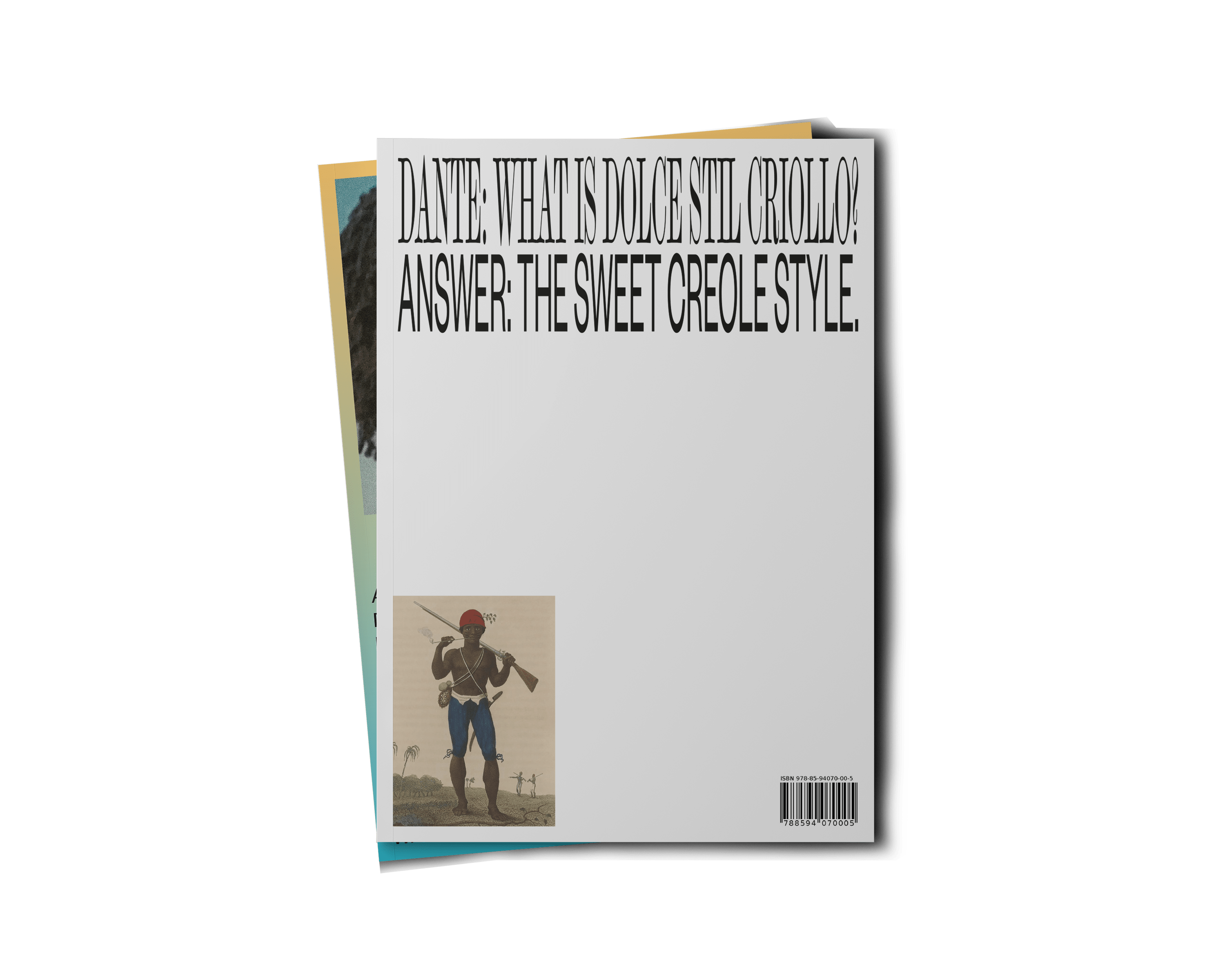
R$30,00 (around 9 USD)
210 x 297 mm
160 pages
4 colors offset printing
Limited edition of 1000
If you have any enquiries, want to collaborate or want to sell Dolce Stil Criollo at your shop, do not hesitate to get in contact at info@dolcestilcriollo.com
The House
That Chloë
Built
There is a mythology that surrounds Chloë Sevigny: a young girl from Darien, Connecticut, population about 20,000, moves to New York City while it is still the centre of the universe, and with the fearlessness of an outsider and the precociousness of youth, the city becomes her. There’s her brilliant career, her fabled style, and her well-documented lovers. Chloë, the ultimate cool girl, who found herself in all the right movies, at all the right parties, with all the right boyfriends. The empire is in decline now. There can’t be another Chloë. There isn’t a Tunnel to learn from the club kids. The skaters have long since left Washington Square Park, where you’d have found her at 19—and besides, even the skaters have been commodified. In the post-Giuliani New York, matcha lattes are all over Manhattan. People are more hungry than they are curious, and this is an important distinction.
This popular interpretation obscures the work that goes into the career Sevigny created. To imagine it was handed to her is cute, in the same way that it is cute to imagine that talent is simply something that you are born with. Those innocent first steps toward expression may be inherent, but they demand suffering and a radical kind of self-acceptance. Kitty, Chloë’s first foray into directing, explores this notion through a young suburban girl who is truly unlike her parents and surroundings. Based on the short story of same name by Paul Bowles, there is solitude and sadness to Kitty’s metamorphosis, but she sees it through regardless. The pursuit of freedom and individuality is sacred, and talent demands more than simply desire and vision—it is something you make daily sacrifices for, as Chloë shows us in the short she recently directed for Miu Miu, Carmen. Carmen shows us the repetition in a creative life, the loneliness that sits beside the ambition. Carmen Lynch, the film’s namesake, is a comedian that trades in that brave and brutal kind of humor whose lasting notes are all empathy. Many artists claim not to work very hard. It’s part of the illusion of genius; you’re born with it, you don’t cultivate it. Chloë’s portrait is a study of that which makes the performer, the love and the labor, and an ode to both.
From Last Days of Disco and Boys Don’t Cry, Chloë was never merely an actor for hire. The bodies she chose to inhabit are an indication of that which compels her. In an early appearance on Letterman, she talks about watching My Own Private Idaho after an art teacher she admired told her she was too young for it. Au contraire—she watched it repeatedly. I tell her that this is my generation’s relationship to her work. Gummo wasn’t a film we could find at the local Blockbuster. It was shared between friends; it became a reference point. “I felt like I really wanted to take a direction, and have a point of view with the work that I did, to make it bigger than just being an actress,” she tells me. During our conversation, she displays a warmth and generosity rare for an artist of her stature. No crack-ups. The same laugh. Still making movies about the outsiders and the outliers. She could have had it easier, made more money. But that which you choose to chase will define you.
Sanja Grozdanic: The first films that you were in were such defining films for my generation, and you a defining figure. In a male dominated culture—at such a young age—you seemed to have so much agency. Can you tell me how you made your early film choices?
Chloë Sevigny: Well, mostly they were films that were offered to me, and now there’s a lot of films that I passed on that I regret. I remember reading a Herzog quote saying it’s not about one film, it’s about the house that you’re building with all the films that you’re in. It’s this career that’s going to mean something, as a whole. I felt like I really wanted to take a direction, and have a point of view with the work that I did, to make it bigger than just being an actress. It was easy in that day, because in the 90s there were so many people doing edgy, expressive work. FromGummo to American Psycho, there was just a lot of opportunities for that. Now I feel that people are less prone to do things that are risky, like that kind of work.
Gummo was one of those films that we re-watched, traded…
That was me with the Jim Jarmusch films when I was in high school. We would sit around and watch them, and old David Lynch tapes, over and over.
I read countless profiles of you and so many of them began by citing your style. Does the style icon trope get tiring? I often think of how your work ethic doesn’t get mentioned as much, despite how many films you’ve been in.
I think it’s probably because the circulation of some of those magazines is so much greater than any of the movies that I’ve ever been in. I feel like I’ve never been in any mainstream movies. I feel like maybe people know me more because of my style than have seen my work, even though I feel like I’ve done countless films, and good films. You know, it all gets tiring, from the cool thing to the work thing to the Connecticut thing to the style thing… doing press in general. Especially when you’re doing a slew of it, which is generally when you’re promoting something you find important and you want people to write about so people can discover it. I especially feel that with Carmenand Kitty and my work now as a director. I mean, I do think if I was a man, obviously, it wouldn’t be the style thing. I would be more like “a character actor” and I don’t think anyone has ever really referred to me as that. I feel like I play very varied parts, very often, and I’m more of that. Nobody has ever said that, and I’m curious why. Even recently from American Horror Story to what I was doing onBloodline couldn’t be any more different.
